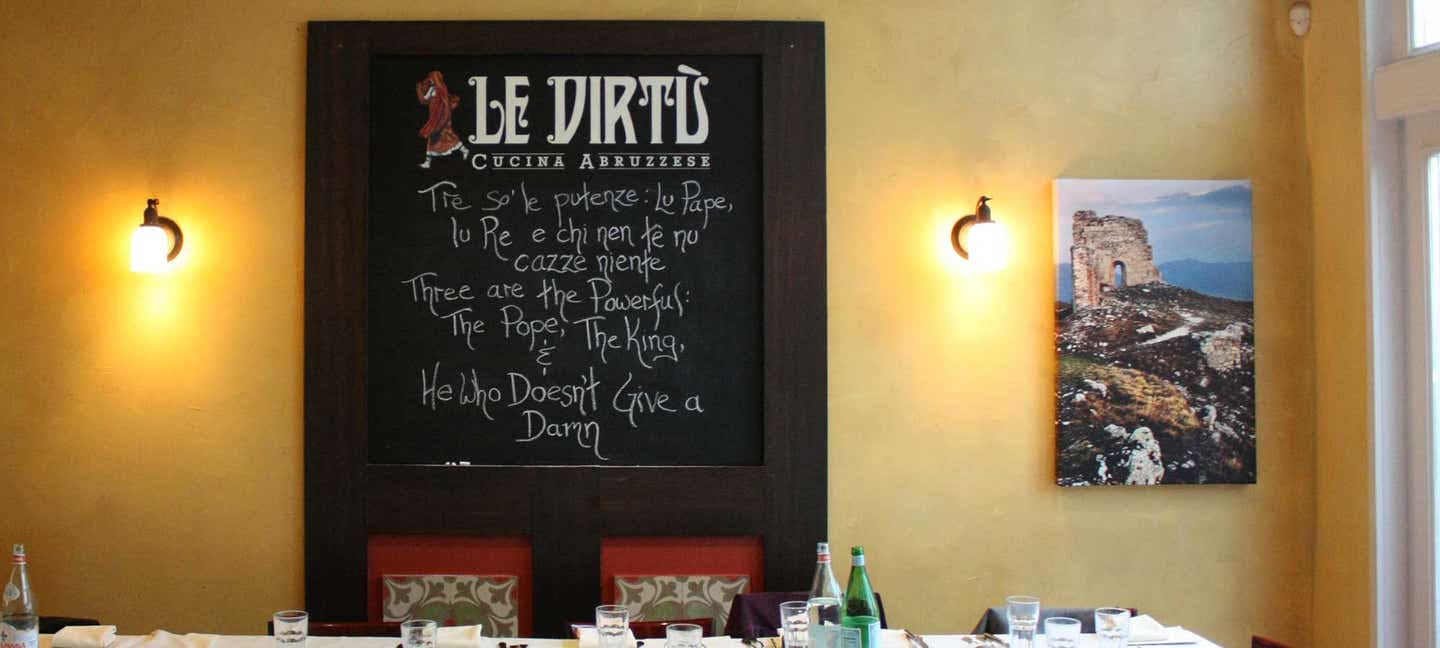
How to Survive a 40-Course, 10-Hour Italian Megafeast
The ancient, epic tradition of La Panarda is alive and well at Philadelphia’s Le Virtu
Everyday life can be ear-piercing in Philadelphia, but on some lucky Sundays, an uncharacteristic hush grips the city. If the beleaguered Eagles are scheduled for a 1 o'clock start, you can silently kick-ball-change across the busiest ZIP codes without stepping on anybody's toes. It's a good window for grocery shopping, gas pumping, or park bench contemplation. It's also, as I discovered last weekend, the ideal time to embark upon a 10-hour, 40-course megafeast that's helped me rethink what it means to be full.
This obscure Italian custom is known as La Panarda, and for the last six years it's been celebrated in South Philly by Le Virtu. It has roots in Abruzzo, whose remote coordinates and wild, craggy topography have helped it remain unspoiled by big-box Italian tourism. Owners Francis Cratil Cretarola and Cathy Lee, with chef Joe Cicala, act as evangelists for a purist expression of Abruzzese cuisine, which marries flavors from the Apennine mountains and Adriatic Sea. Leaning on Pennsylvania ingredients, the restaurant's fish, game, and simple pastas succinctly capture the terra of two rural traditions.
30 or so convivial guests filed into the sun-soaked dining room and found seats just as that Washington football team kicked off on a small TV above the bar (Philly would end up losing). A board on the far wall featured an Italian phrase scrawled in white chalk. (“Three are the powerful: the Pope, the King, and he who doesn’t give a damn.”)
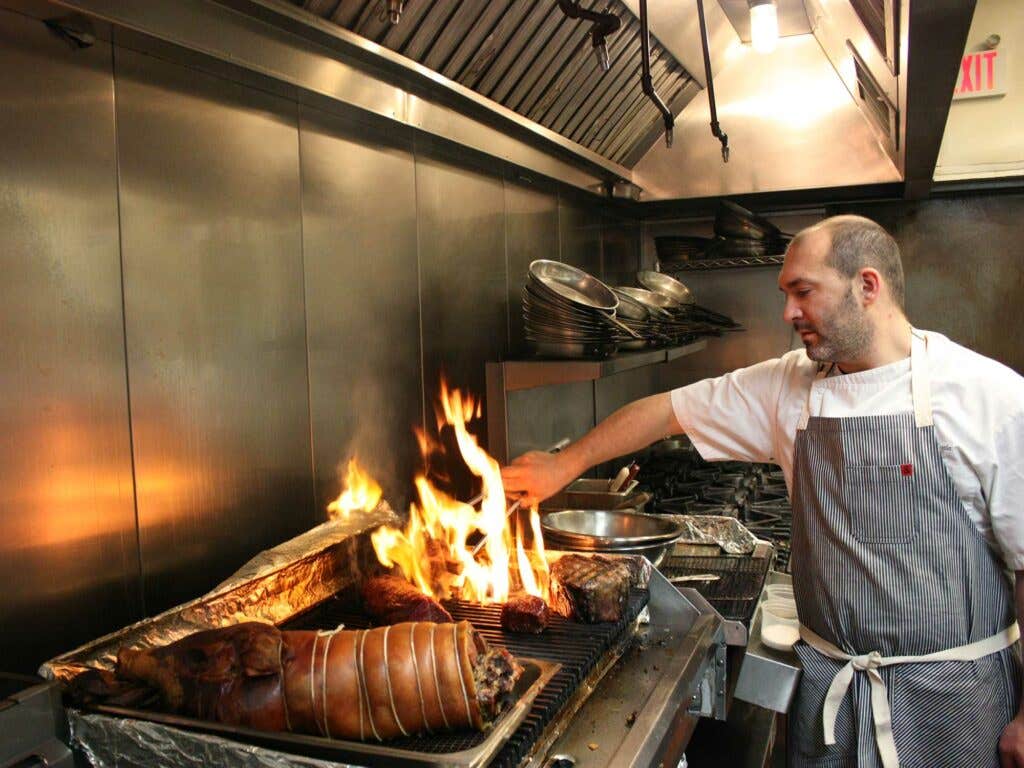
It felt necessary to embody that last archetype laying eyes on Cicala’s menu, broken into 10 stanzas and printed on long, skinny paper, like a scroll clutched by a town crier. The chef spent the better part of the preceding week alone in his basement prep kitchen. For the actual dinner, he brought in an old friend, Vern Smith, to lend a hand; they skated together on the Chesapeake Bay Chiefs, a club hockey team in suburban D.C., and both became chefs afterward.
Conversation was light as the lead volley hit the table: pickled sardines, baccala fritters, and skewered lamb jutting from a glazed caddy labeled "arrosticini." A clean crudo led the second wave, an insane juggling act of roasted langoustines, turbot over potatoes, octopus-and-ceci stew, and delightfully murky stewed cuttlefish—an Abruzzese Christmas specialty. Cordial but focused, Cicala maintained a calm tone on his line, occasionally peeking through stacks of plates at the eager pack devouring his handiwork.
"Abruzzo is an anachronism," says Cretarola, a Reading, Pennsylvania native whose clan originates there. He holds up the region, with its unspoiled national parks, medieval architecture, and multi-generational farmers and shepherds, as the ideal-yet-elusive Italy, the one visitors think they're going to find but rarely do. Increasingly rare in modern Abruzzo, the Panarda is doubly esoteric, a low-key custom buried within an already cloistered culture.
Cretarola, a long-haired creative writing MFA with a Wiki-quick recall for historical ephemera, dates the Panarda back to the 1500s, though the first recorded instance came in 1657. That legend goes that the Serafini family of Villavallelonga established a dusk-to-dawn feast every January to honor Sant'Antonio Abate. A Serafini woman had prayed to him, patron saint of domestic animals, after discovering her infant clenched in the jaws of a wolf. The beast gently dropped the baby and walked away, so I guess she was like, Let's eat!
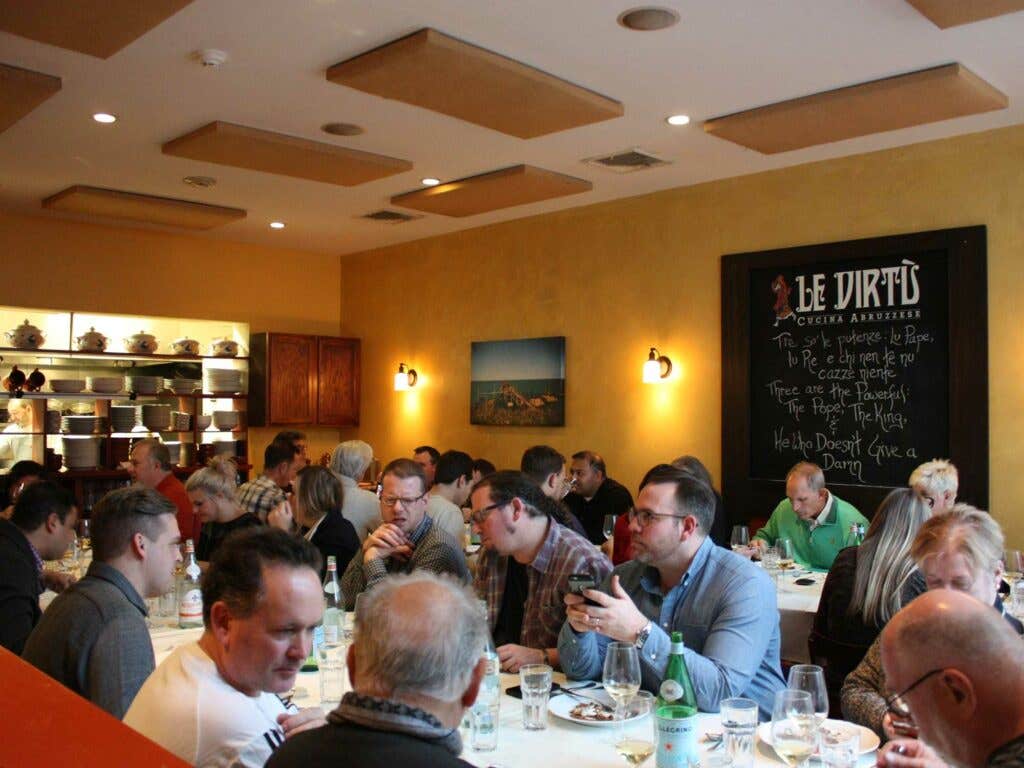
That's just one example of the inspiration behind a Panarda, which can be held at any time of year, in association with any type of event. Often, they were organized by wealthy Abruzzese landowners as a thank-you to peasants who did all the real work. They always feature 40-plus courses, served consecutively over many hours. Marathon drinking is customary, as is the expectation that guests taste every single dish.
Le Virtu held its inaugural Panarda in 2011; the team ended up planning much of the menu from a hospital room, as Cretarola awaited a stem cell transplant to treat a recurrence of Hodgkin's Lymphoma. (He's doing well today.) The dinner's only grown in notoriety since then, with guests paying upward of $300 a head (not exactly serf salary) to taste every trick chef Cicala's got.
After 14 courses, the group, still jovial, took its first break, milling about the bar, breaking off into groups, pounding espresso and smoking on the patio. On these respites, I met other diners keen on taking the Panarda by the horns, like Dr. Mario Magasic, a New Jersey gastroenterologist who's done this three years in a row; and Jim Karaszkiewicz, a medical technologist from Maryland who helped develop the diagnostic tool the CDC uses to identify the Ebola virus. Both can, and will, travel to eat.
Lee noted to me that this is typically when people start getting quiet, silently wrestling with the realization that they're less than halfway through a meal that will end up being longer than three consecutive viewings of Avatar. No one at my table got the memo. I learned about sonnet mechanics, the history of the Kohler kitchen and bath family, the drinking proclivities of noted Abruzzese Dean Martin's daughter, and children who love pounding chicken into paillards. Fosco Amoroso, whose Tricana Imports brought in a seemingly endless supply of Abruzzese wine for the occasion, shared a story about how his Milanese mother bullies him into letting her do his laundry every time he visits.
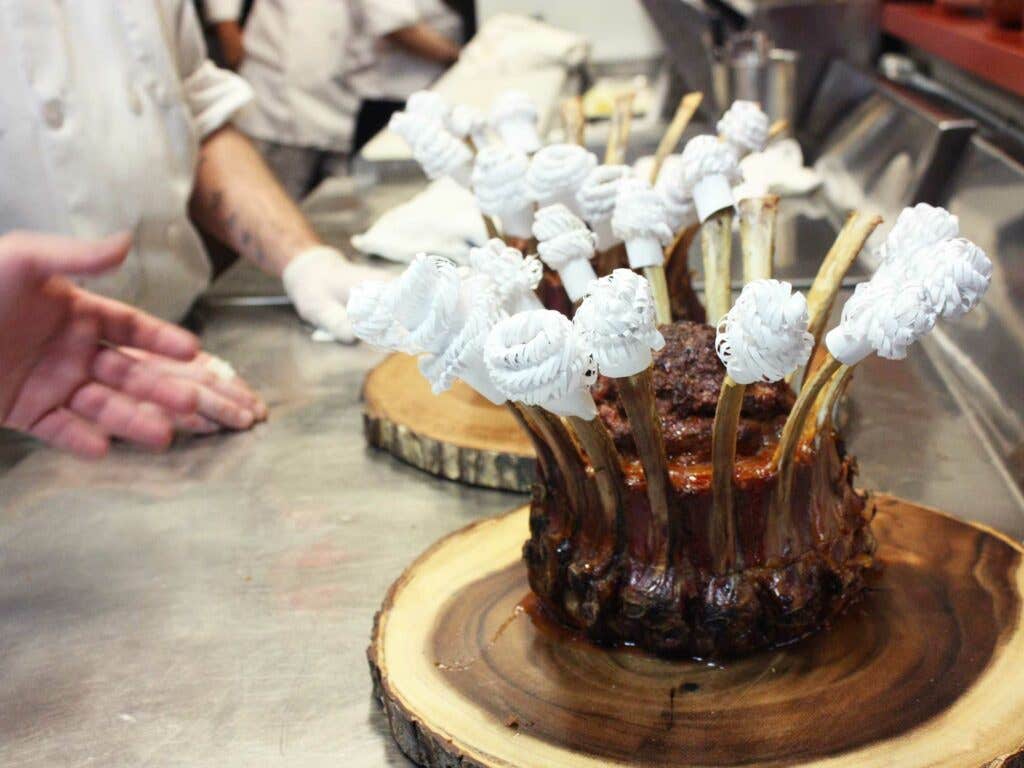
As a cavalcade of appetizers (capon meatball in egg drop soup), salads (Abruzzese pecorino with tempura-battered mint) and salumi (nduja, the fiery Calabrian pork spread) march under my nose, I begin overhearing murmurs heavy with a certain P-word. Watch out for the pasta. Everything's fine...until you get to the pasta. If you can make it through the pasta, you're home free, I swear. The. Pasta. Will. Kill. You.
Around this time, the meal’s first wine-aided cheers (“Woo!”) emerge in the air, originating at a neighboring table.
"I'm nervous about the pastas—I have no ability to pace myself," Gabe Free, a personal trainer visiting from D.C., admits as we both snap way-too-dark photos of the timbale, a delicate crepe-based answer to Big Night's timpano filled with sweet lamb ragu. Cicala had displayed it on a wooden slab, garnished by greens and dried chilis, in the middle of the dining room, a warning taunt for the carbo-bombardment ahead.
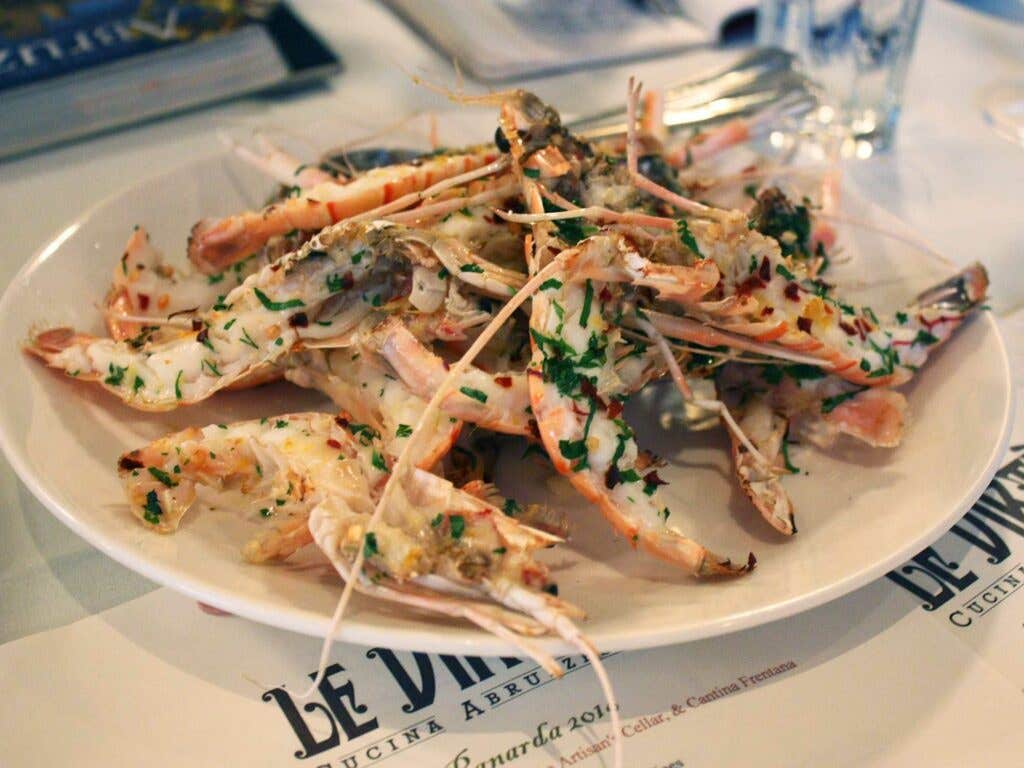
To refer to the portions of the subsequent seven starch courses as "family-style" assumes that the Duggars are a conventionally sized American family. Spaghetti baked in cartoccio with shellfish. Taccozzelle studded with luxe Navelli saffron and black truffle. Rigatoni and a ridiculously rich veal breast Cicala casually described as being cooked in French onion soup. The whispers down the lane of this course's ability to knock eaters on their asses were not hyperbolic. People threw their hands up and shoved their chairs out in an attempt to stretch, nibbling on blood orange-basil sorbetto made by Joe's wife Angela Ranalli, a pastry chef who also dabbles in tarot card reading. (Guessing she probably saw this coming.)
By the time the main-course meats—gorgeous porchetta, ribeye, merguez-stuffed crown rack of lamb and rabbit marsala—start hitting the table, I've slowed to a bite or two per dish, determined to honor the ancient Panarda guidelines while avoiding an Augustus Gloop-like fate. I limp through the mercifully small cheese and dessert courses and am rewarded with a curious, dubious prize: a heavy pour of Centerba, a 140-proof Abruzzese liqueur the color of Ecto Cooler.
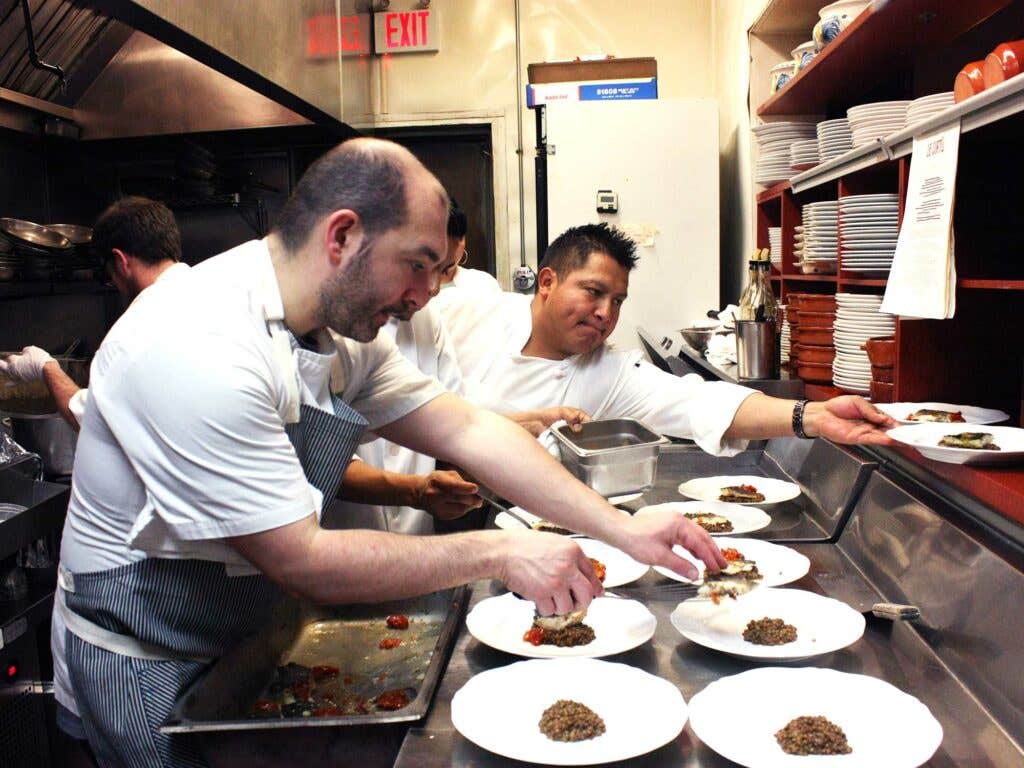
“So is this like Chartreuse?” I ask Lee.
"It numbs the body so you can no longer feel anything," she gently corrects, describing its effects by referencing the animation from the old Pepto-Bismol commercials. I knock it back, confirming its effectiveness shortly thereafter.
Yes, after 40 courses of food and countless glasses of wine spread between the hours of noon and 10 p.m., I am very full and pretty drunk. But merely gorging oneself, motivated by bragging rights or abject gluttony, is not in the spirit of La Panarda. For Cretarola, the traditions of his ancestors are kept alive both by the food and by the sincere interactions it inspires—for him, any conversation in his restaurant that doesn't involve a smartphone is a reflection of Abruzzese hospitality. "Let the ingredients speak," he says. They have much more to say than any chef."
A few days after the dinner, I call the office of Dr. Magasic, the gastroenterologist and hat-trick Panarda survivor, to get his professional opinion on what the hell we've done. "No, we should not be eating 40 courses of food paired with wine in one day," he advises. "The quantity is ridiculous. It's not something that should be done on a regular basis."
Once a year isn’t regular, is it?
Keep Reading
Continue to Next Story










